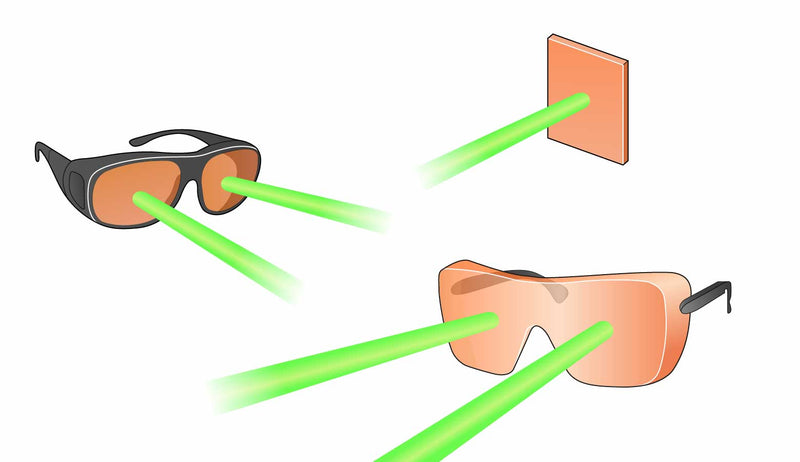Safe Laser low-level-laser therapy (LLLT) through it stimulating tissue repair, can aid in the healing of wounds caused by ulcers. LLLT accelerates tissue regeneration and repair by encouraging metabolic processes in cells. It stimulates fibroblast activity, collagen synthesis and angiogenesis (formation of new blood vessels), which are essential processes that aid in healing wounds. It can help promote the faster healing of wounds caused by ulcers.
Reduced Inflammation - LLLT reduces inflammation by inhibiting pro-inflammatory cytokines, and increasing anti-inflammatory mediators. LLLT aids in reducing inflammation, which may slow healing and increase the damage to tissues in wounds that are ulcerative.
Pain relief- LLLT affects pain perception by affecting the nerve conduction. This reduces the release of pain-related mediators, such as the substance P. In the case of ulcerative injuries, which are often caused by pain and discomfort, LLLT may help relieve pain and improve overall patient satisfaction.
Improved Blood Circulation LLLT improves vasodilation and microcirculation which results in greater blood flow to wound location. Improved Blood Circulation: LLLT boosts blood flow to the site of injury by delivering oxygen and nutrients.
Antimicrobial effects- LLLT has been found to possess antimicrobial properties which can help reduce the risk of infection ulcerative wounds. Through promoting the clearing of bacterial infections and preventing the spread of infection to the wound area, LLLT helps reduce the incidence and speeds the healing of wounds.
Reduced Scar formation Reduced Scar Formation LLLT can help minimize scarring from ulcers, by promoting tissue regeneration and remodeling. Through stimulating collagen fiber production and promoting the alignment of collagen bundles, LLLT helps produce stronger, better organized scar tissue.
Safe Laser's low-level laser therapy is non-invasive, drug-free and helps speed up healing and reduce discomfort. The treatment can also improve the overall outcomes of wounds. It is essential to consult with a medical professional about the proper treatment for wounds. Check out the top rated safe laser 500 ár for website examples including lágylézer hatása, safe laser használata, lézeres fájdalomcsillapítás, lágylézer kezelés budapest, lágylézer ár, lágylézer készülékek, lágylézer ár, gyógyító lézer készülékek, orr lézer készülék, lágylézer kezelés árak and more.

How Can Safe Low-Level Laser Therapy Assist With Ear Problems (Lllt?)
Low-level laser therapy may be used to treat a variety of ear disorders. For conditions such as otitis externala (inflammation of the outer ear canal) or Otitis media (middle ear infection), LLLT can help alleviate inflammation and associated symptoms such as swelling and pain.
LLLT can be effective in relieving discomfort, pain and earaches caused by Otitis or earaches.
LLLT stimulates tissue growth and repair by accelerating healing. LLLT assists in promoting faster healing of tissues damaged that are affected by conditions like otitis tear in the eardrum, or otitis.
Improved Blood Circulation LLLT improves vasodilation, microcirculation and blood flow to the ear. Increased circulation aids in the delivery of oxygen and nutrients into the damaged or inflamed tissues. This helps to speed up healing.
Tinnitus treatment- LLLT treatment has been studied as a potential remedy for Tinnitus. Tinnitus can be characterized by a buzzing, ringing or humming within the ear. Although the precise mechanisms are not fully understood, LLLT can help improve blood circulation and decrease inflammation within the auditory systems which can result in less tinnitus.
Reduction of Earwax Buildup- LLLT could aid in reducing and softening earwax (cerumen) buildup within the ear canal, facilitating its removal and reducing the possibility of ear blockage or infection. This can be especially helpful for people who have excessive earwax, or who suffer from earwax imposition.
Overall, Safe Laser low-level laser therapy offers a non-invasive and drug-free approach to treating a range of ear disorders, providing relief from symptoms like pain, inflammation, and accumulation of earwax. Before using LLLT for treating ear conditions it is recommended to consult an ENT specialist. They can offer you the correct diagnosis and suggestions for treatment. Read the top rated safe laser 150 for site info including lágy lézer vélemények, lágylézer hatása, lágylézer hatása, lágylézer készülék, lezer kezeles, lágylézeres készülék, lágylézer vásárlás, mozgásszervi betegségek kezelése, mozgásszervi betegségek kezelése, laser kezelés and more.

How Long Before A Laser Becomes Efficient In Treating Acute Ailments?
Safe Laser's capability to alleviate acute conditions may require a number of sessions, based on degree of the condition, the individual's response and treatment plan prescribed by a medical professional. LLLT can provide rapid relief in the case of acute illnesses. This includes recent injuries or inflammations, and sudden pain episodes. In certain instances, patients may feel less swelling, pain and inflammation following one or two LLLT sessions. For long-lasting and lasting effects, it's generally advised to undergo an entire series of LLLT sessions.
The exact amount and frequency of LLLT sessions needed to address acute illnesses can differ depending on the disease being treated and the severity of the symptoms, and individual aspects like overall health and the response to treatment. The treatment regimen is generally customized to each individual and may include scheduling LLLT sessions several times per week, over a certain time frame.
It is essential to adhere to the prescribed treatment regimen by a medical professional and to attend every scheduled LLLT sessions to reap the maximum advantages of treatment for acute conditions. In addition, people might see improvements in their condition over time with continued treatment. If you are concerned or have doubts about the treatment plan, or how it is progressing discuss it with your healthcare provider.